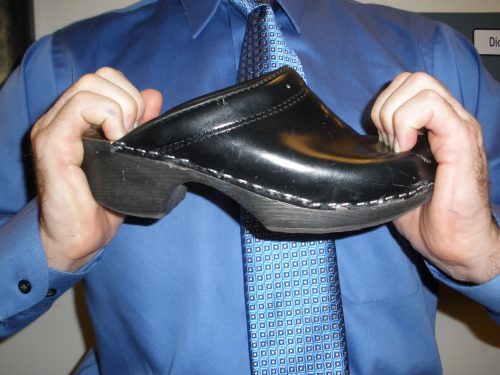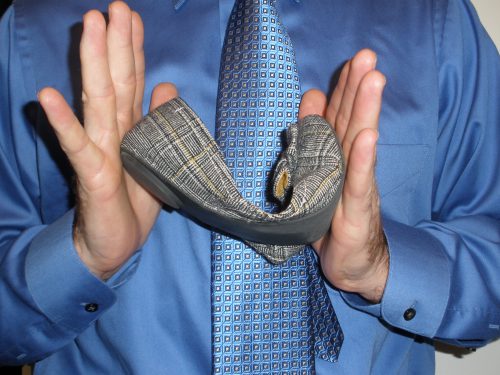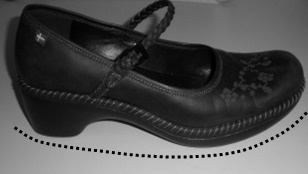Comfort Shoes
“The patient is the best judge of what constitutes a comfortable shoe.”
Properly Fitting Comfort Shoes Handout or Watch Video
The following are shoe characteristics that are typically associated with a comfortable shoe:
A well-fitted shoe
Shoes not only need to be the correct length to fit our foot, but they also must be the correct width. Shoe manufacturers and shoe styles often vary the width of their shoes significantly. Make sure that you wear shoes that not only fit the length of your foot, but also the width.
Stiff sole
A stiff sole minimizes excessive loading through the forefoot or midfoot (Figure 1a). The opposite of this would be a highly flexible sole (ex. a slipper), which tends to disproportionately load certain areas of the foot (Figure 1b).
Figures 1a-b


Rocker bottom contour
A smooth, slightly rounded contour to the sole of the shoe will allow more even dispersion of force through the foot, as it moves from heel strike to toe off. (Figure 2)toe off. (Figure 2)
Figure 2

Wide toebox
In general, the front of the shoe should have enough space to accommodate the front of the foot without the foot being squished (Figure 3).
Soft, comfortable uppers
The material making up the upper part of the shoe, particularly covering the toes and midfoot, should be soft and somewhat flexible (ex. soft leather).
Soft, comfortable insert
The bed that the foot rests on should be soft and accommodating to the foot. It may be necessary to buy a comfortable “over-the-counter” orthotic to replace the existing shoe insert.accommodating to the foot. It may be necessary to buy a comfortable “over-the-counter” orthotic to replace the existing shoe insert.
Edited October 10, 2015